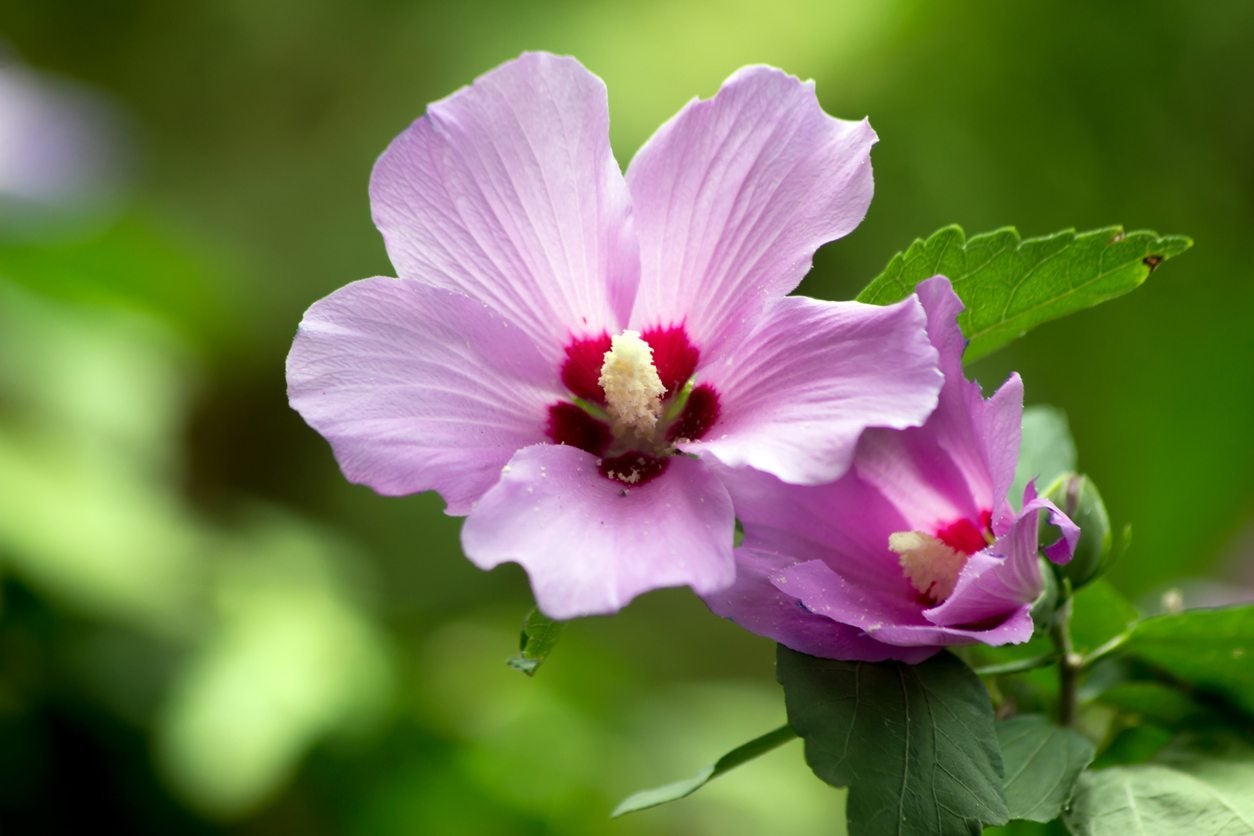My Rose Of Sharon Is Not Blooming – Reasons For No Rose Of Sharon Flowers


A rose of sharon without blossoms is just a nice shrub. The spectacular flowers that emerge from this landscaping favorite are why you put it in in the first place. If you aren’t seeing any flowers on your rose of sharon, there is likely a simple problem that can be solved, although it may not be until next year that it blooms again.
No Rose of Sharon Flowers
Rose of sharon is a beautiful shrub that gives you pink, white, or purple flowers in abundance, after other plants have finished blooming, except for those years when something goes wrong. There are several reasons you may either see no buds forming or your buds fail to open and simply fall off prematurely:
- Excessive shade and too little sun.
- Drought during an exceptionally dry summer.
- Rot caused by an exceptionally rainy summer or spring or because of soil that isn’t draining.
- Inadequate phosphorus.
- Inappropriate or inadequate pruning.
- Pests or disease.
What to Do When Rose of Sharon Won’t Flower
Having no blooms on a rose of sharon is a real bummer, and it may seem like there are several problems that could be a cause. The good news is that most of these are simple fixes, although making corrections now may not get you flowers until next season. If your shrub isn’t getting enough sun or the soil doesn’t drain enough, you may need to move it to a better location. More likely the issue is one of over or under-watering, though, which is easier to correct. Your rose of sharon should get about 1 to 1 and a half inches (2.5-4 cm.) of water each week. Too much water and rot can prevent flowering. Too little water will stop flowers as well. If your rose of sharon is not blooming and you give it the right amount of water and sun, it may be that your shrub isn’t getting enough phosphorus. This is easily fixable with a high-phosphorus, low-nitrogen fertilizer every couple of weeks. Bone meal helps too. Pruning can be an issue as well, as new blooms form only on new branches. If you never prune back older branches, you’ll get fewer flowers. Only prune in the late winter or early spring, otherwise, you may prune off buds, resulting in no flowers. Finally, check your rose of sharon for signs of pests or disease. Look for aphids on the undersides of leaves and buds. If the buds form but don’t open, look for rotting inside, which can indicate a fungal infection. For aphids, use an insecticidal soap or neem oil. For a fungal infection, use an appropriate spray from your local nursery (neem oil works for this too). In the future, prune the shrub to let air circulate better and destroy any diseased buds carrying the fungus.
Sign up for the Gardening Know How newsletter today and receive a free copy of our e-book "How to Grow Delicious Tomatoes".

Mary Ellen Ellis has been gardening for over 20 years. With degrees in Chemistry and Biology, Mary Ellen's specialties are flowers, native plants, and herbs.